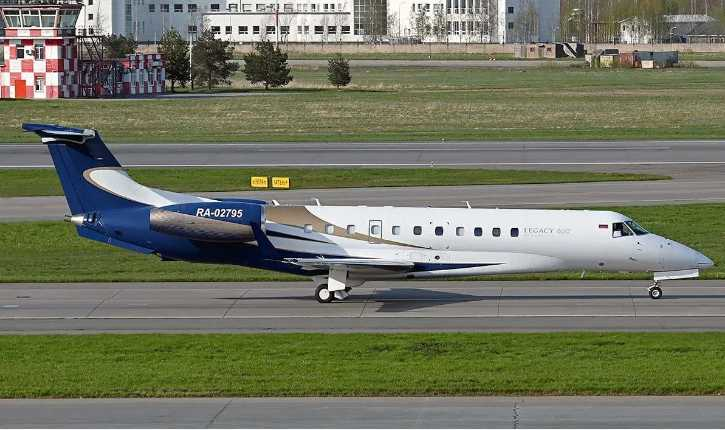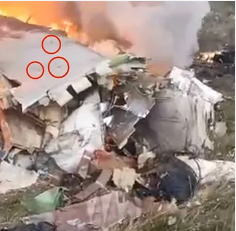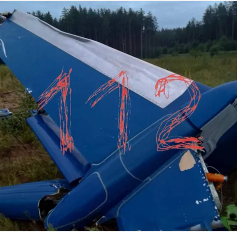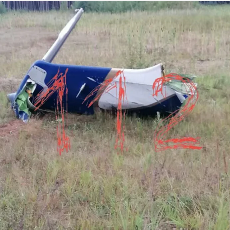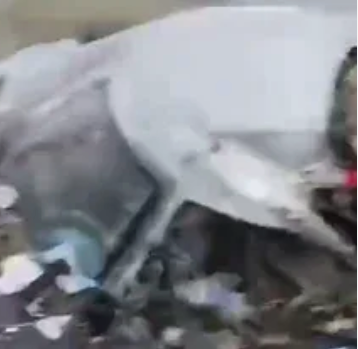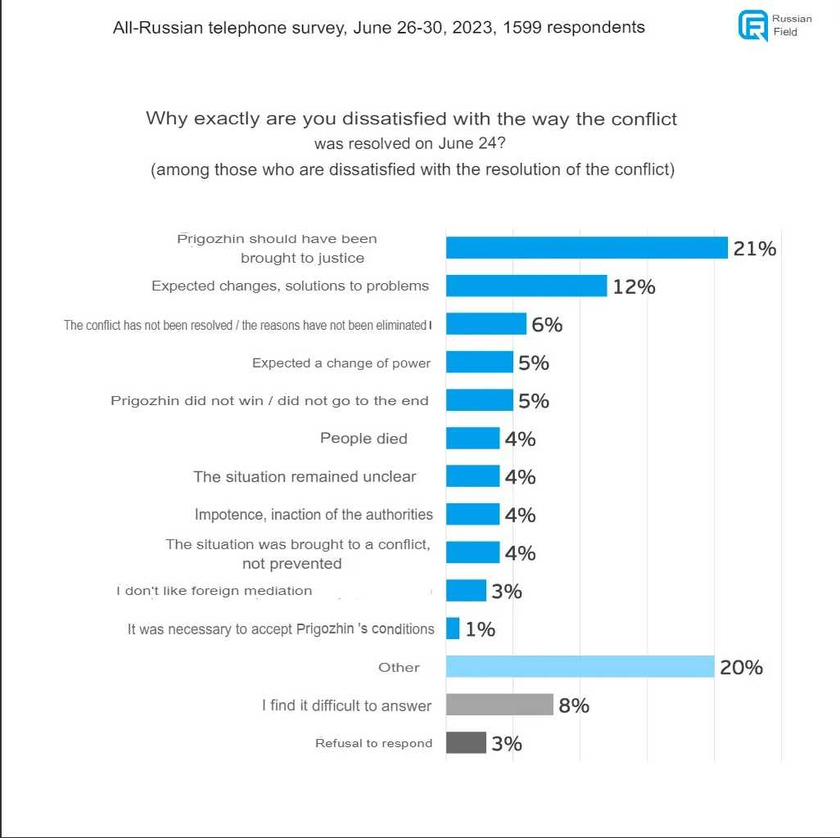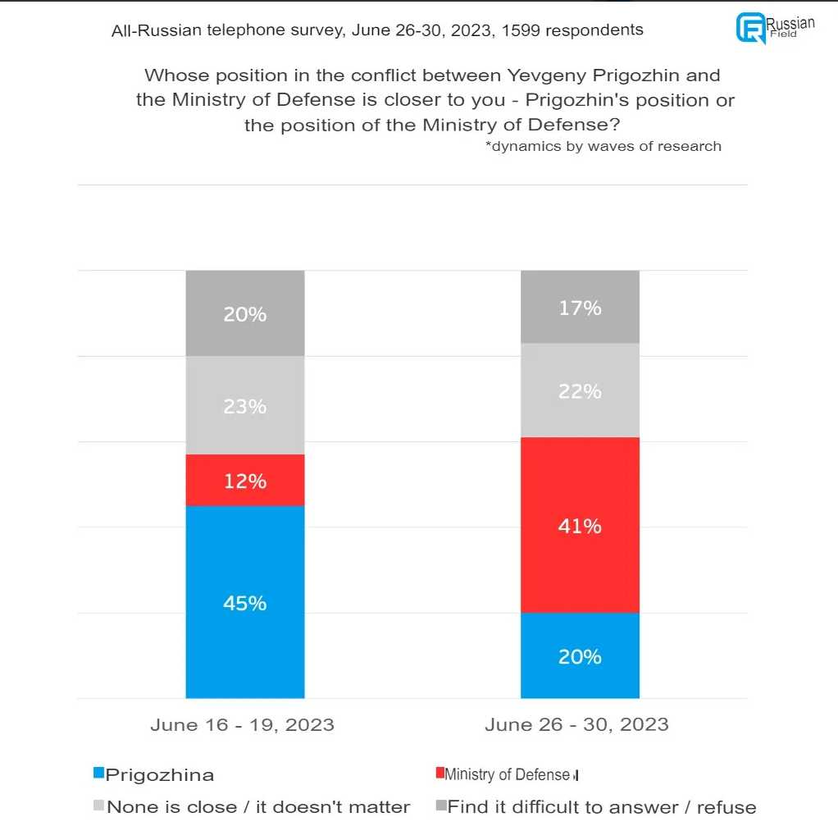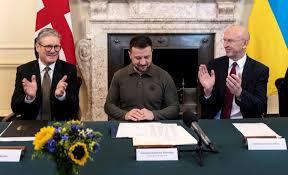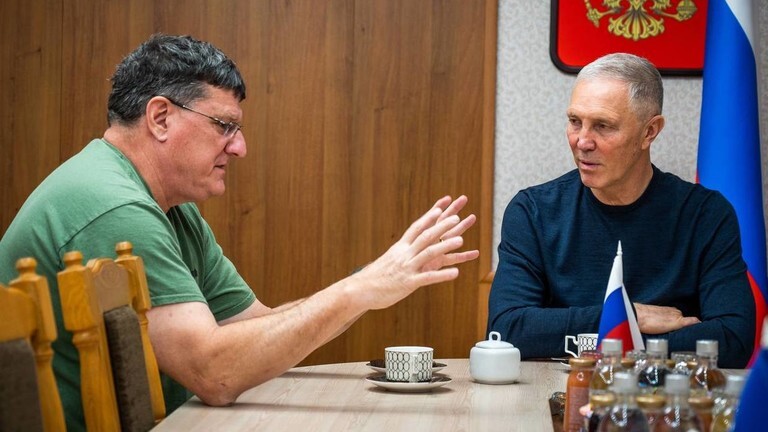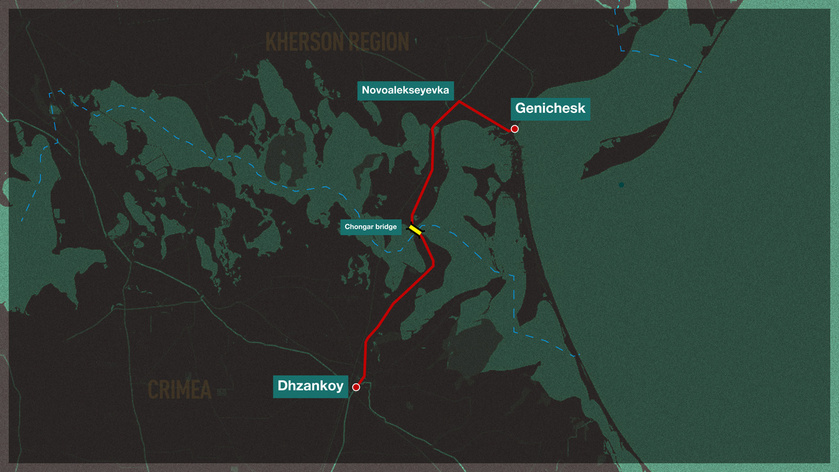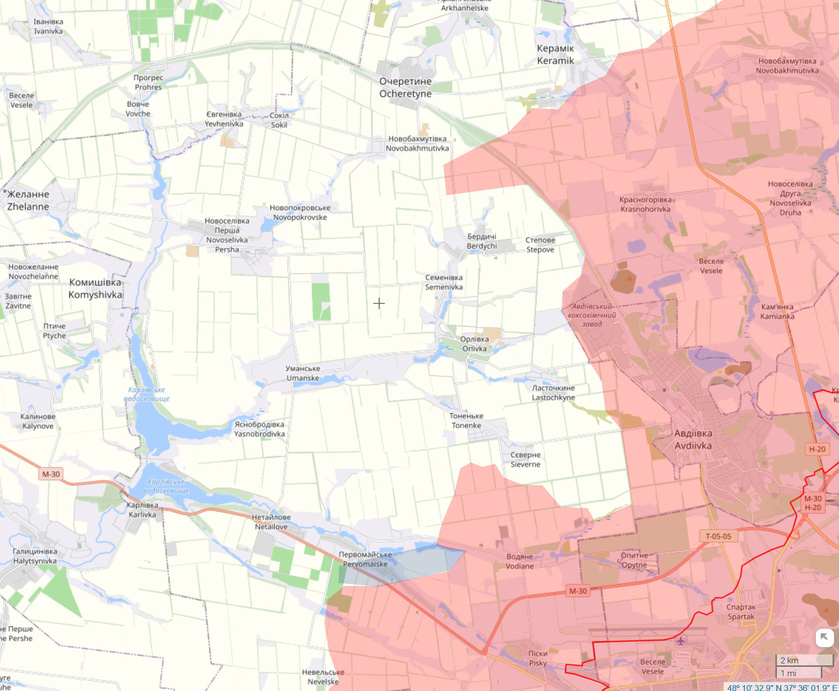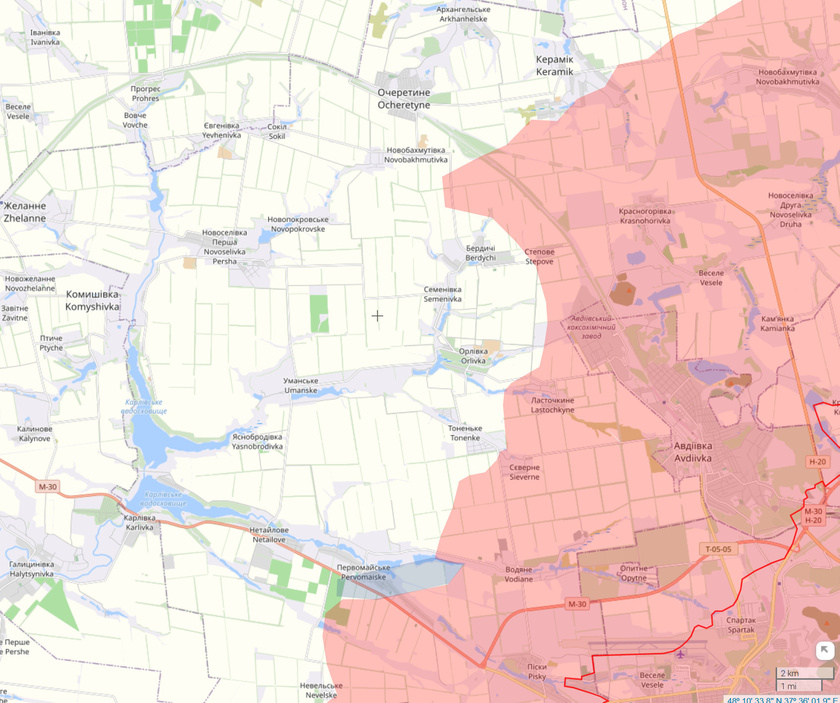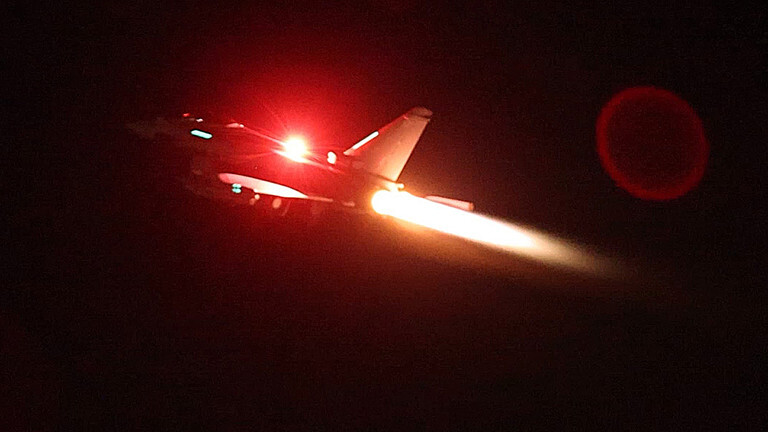An Embraer Legacy business jet registered to Prigozhin on its way from Moscow to Pulikovo airport outside St. Petersburg crashed near the village of Kuzhenkino, in Tver region northwest of Moscow.
The earliest reports jumped the gun claiming Russian air defense shot it down, which spurred theories that this was payback for the Russian airmen killed in Prigozhin’s revolt on June 23. But we’ll get to that theory.
Let’s start with what we know. For now, there are reports from “sources” that the bodies of Prigozhin and Utkin have in fact been identified, but this is not confirmed by more reputable or official reports yet:
The plane with Prigozhin was blown up. The bodies of Prigozhin and Utkin were identified - the source of Tsargrad in the commission of the Federal Air Transport Agency
This was later changed to:
One law enforcement official who is now at the scene of Prigozhin's plane crash said:
"The identification of Prigozhin and Utkin is nothing but fiction. It is known that they were on board. However, it is too early to talk about identification. Inspection of the scene and identification has not been carried out yet.
Now they have arranged lights, waiting for everyone from Moscow. The inspection has not been carried out yet, several corpses without heads, inside and away from the cabin, mixed parts of corpses. Personal belongings have not been searched. The explosion technicians are still examining everything around".
Let’s examine all the theories and possibilities one by one, and make some projections about potential outcomes of this event.
Firstly, it can’t be ignored that this occurred on 8/23 while the Wagner coup was on 6/23, the day when the Russian airmen were killed. Someone could be making a symbolic gesture to redeem the memories of the killed airmen.
Now as to the AD missile theory. A number of images have been released of the wreck. Some like the following show what appear to be fragmentation perforations from an AD missile:
Some may recall the infamous MH17 shoot down, with the fragmentation holes all over the cockpit:

However, other photos from the Prigozhin jet crash site seem to show no such evidence at all:
Interestingly, if I’m understanding the photos correctly, the tail empennage completely separated from the rest of the craft while still in the air, which could imply an internal explosion that neatly blew the plane apart at the rear or center.
However, a noteworthy fact is that there does appear to be a sort of contrail in the air roughly commensurate with an AD missile explosion. It could also be something else, from an internal explosion of the plane itself—it’s impossible to tell for certain.

🇬🇧 A subscriber noticed an interesting detail after analyzing data from the Flight-Radar service. According to the radar records, even before the crash, the plane managed to lose 100 knots of speed and sharply increase it, despite the fact that the altitude all this time continued to increase.
In simple words, such metamorphoses took place even before the moment of the fall. It is also difficult to explain such a change in characteristics by the fall itself: usually the stall speed is less than 150 knots.
All this, of course, does not allow determining the exact cause of the business jet crash: it will be determined by the commission. However, in any case, the version with an emergency situation on board against the background of the absence of large traces of striking elements on the fuselage will also be considered on an equal basis with the others.
I’m not a civilian airline expert. Perhaps someone in the comments can chime in—is it normal to dip your speed like that, up and down as seen above?
Reportedly, Prigozhin usually flew with 2 planes and switched between them, with only a tiny circle knowing which plane he would be on at any given time:
Valery Chekalov, who died along with Prigozhin, was the only one who knew about the businessman's movements - it was he who led the transport logistics
According to a Readovka source, Valery Chekalov, who died along with Prigozhin, is the only one who knew exactly where the businessman was and at what time. He was responsible for all movements and transport logistics. However, he himself had nothing to do with the security service.
In addition, Chekalov was Prigozhin's deputy for a number of important issues - in particular, he was one of those responsible for the supply of ammunition. As a rule, Chekalov and Prigozhin flew on different aircraft, but this time he was on the same plane as the businessman.

Such tactics of course are standard for high profile VIP individuals. Prigozhin’s penchant for disguises and things of that nature was already uncovered last time.
The one puzzling thing it does bring up however is that if the act was carried out by way of explosive planted on the plane, how would the perpetrators know which plane to “mine” if he infact kept it hidden up until the last moment? There was a report stating that Russian authorities now recovered footage, presumably from the airport, showing exactly which plane he boarded in an effort to confirm his death. So if it was a governmental hit job, they would have known at the last minute which plane he boarded, but this would not have given enough time to plant an explosive on it.
Of course, both planes could conceivably have been mined with an explosive. Or Prigozhin himself could have somehow accepted an explosive device, unbeknownst, in the same way that Vladlen did when he accepted the statue/bust of his likeness.
So now let’s use that to segue into theories of who or how it could have been done. Cui bono and who stands to gain or lose from this?
Firstly, let’s state the obvious: if Putin or the FSB wanted to “off” Prigozhin, they likely would not have done so in such an obvious way, over Russian territory, near Moscow, etc. That style of assassination stinks of the laughable Boris Nemtsov CIA type of hit, on the steps of the Kremlin as fodder for the gullible Western masses who could possibly buy that Putin would assassinate someone literally on Kremlin grounds.
So the Prigozhin hit has indications of being an outside force trying to frame Russia with the presumable intention of starting, or continuing, the internecine war between the Wagner-loyal faction and the Kremlin/MOD. Of course, it’s possible that a rogue S-300/400 commander used the opportunity to get one back “for the boys” killed by Prigozhin’s people on June 23. However, given what we now know about Prigozhin’s devious plane-hopping, such a rogue commander would not know which plane to target, given that 2 of Prigozhin’s planes were in the air at the same time, one of which returned and landed in Moscow after the first one’s downing.
We could perhaps argue that the “rogue commander” was being fed precise info by a military faction in the form of some general who wanted revenge, and they had more accurate information on exactly which plane to shoot down. That is possible. However the debris photos seen above don’t appear to indicate an AD missile in my view. The 2 or 3 explosions heard by eyewitnesses is also an intriguing and peculiar clue, particularly given that if an onboard explosive device was used, it would likely not lead to several explosions of that sort.
Take it with a grain of salt but we have the following rumors:
CHVK-OGPU:
"Relatives of flight attendant of Prigozhin Kristina Raspopova, with reference to the words of the girl, was told about strange manipulations with the plane before the last flight. It was taken away for some short-term and incomprehensible repairs."
And:
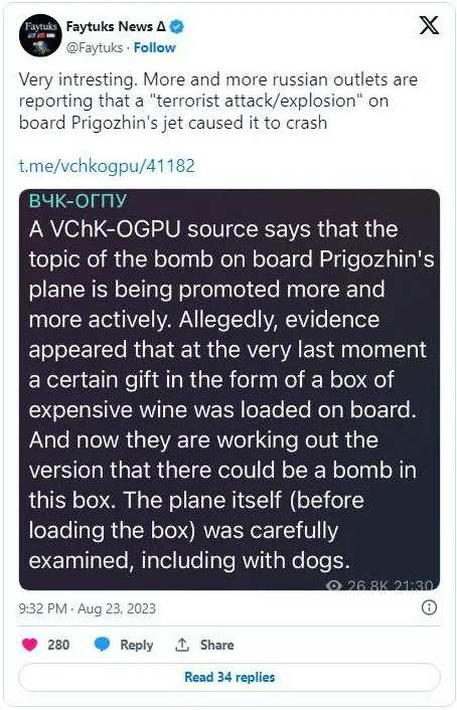
They’re both from the VChK-OGPU propaganda outlet, but it’s something to chew on.
As I said, the June 23 to August 23 symbolism would appear to point to “pay back”, however this can also be taken advantage of and utilized by a 3rd party in order to frame Russia.
But could Ukraine/CIA or some such 3rd party have carried this out? It’s difficult to believe them gaining access to Moscow airport in a way that would allow them to plant a bomb there, though the above claims he was lured with an expensive wine gift, perhaps playing to his vanities in the same way that Vladlen’s statue/bust played to his. But it’s still hard to believe the SBU could have somehow fooled the notoriously cunning and suspicious Prigozhin with an explosive package of some sort—though we can’t discount anything.
Could they have shot the plane down in the sparsely populated region with some type of anti-air capability smuggled from Ukraine? Well, the plane’s altitude appeared to be nearly 30k feet at the time of the catastrophic “event”. There is almost nothing in existence that you could smuggle over a border that can shoot an object down at that height. Manpads top out at 12-15k, give or take. No drone in existence can reach that altitude, other than the gigantic American RQ-4 Global Hawk or something like that. You’d need a Buk or S-300 type system to reach that altitude, and that would be impossible to hide.
In general an air defense missile shot at the craft would be difficult to hide as there would be a contrail at least part of the flight (for the early booster stage) visible by many people, so the likelihood of an AD missile shoot down is low. Some will point to the alleged Buk shoot down of MH17 but a rural village in the most sparse part of Donbass does not quite compare to the region outside Moscow.
Thus my conclusion is the plane likely exploded from within, and if that’s the case, it would point more strongly to the FSB as I would find it difficult to believe that Prigozhin would have fallen for accepting some kind of disguised explosive device from someone like an SBU member on the ground, nor would such a device be easily triggered at 30k feet as it would be nearly impossible to use any of the most common methods like a cellphone trigger, etc.
The mystery remains. The only other conceivable option is an inside job of some sort. Someone on Prigozhin’s own team who knew he had to go, for whatever reason. A close trusted associate who knew all his boss’s ins and outs would be a candidate for being able to effectively plant an explosive of some kind. A piece of luggage from a person like this would not trigger Prigozhin’s suspicion, for instance.
The sound of multiple explosions is still problematic but there could have been some kind of secondary blasts from the engines or something else perhaps.
Lastly, I want to mention the possibility—remote as it is—that Prigozhin and Utkin are not even dead. For the record, as of this writing it has been emphasized that identification of the bodies has not yet occurred, as the explosives specialists were first on site gathering evidence and determining fault. Yes, I know many channels posted confirmations from various people including those “close to Wagner”, etc. But there’s always the possibility that either the trickster staged his own death to escape what he saw as a likely fate, or for whatever reason the Russian gov’t itself was complicit in offgridding him; particularly given the odd indeterminate trickery of the two planes both belonging to him in the sky at the same time, and later reports that he was actually on the flight logs of both planes. In this game, I don’t trust anything I don’t see with my own eyes, and I didn’t see who debarked when the second plane landed back in Moscow. Most likely him and Utkin are dead, but I’m simply putting it out there to cover all bases. Who knows, maybe Putin, in a final moment of forgiveness showed mercy on Prigozhin and allowed him to fake his own death in exchange for disappearing and handing Wagner over to Shoigu/Russia. Stranger things have happened.
Moving on.
Days ago, the notorious propaganda channel of CHVK-OGPU broke the story that famed Russian general Sergei Surovikin had been removed from his post as commander in chief of the Russian Aerospace Forces. They reported that he had been in detention of some kind since the events of the Wagner insurrection. The dismissal, at least, appeared to be confirmed yesterday by more ‘official’ outlets such as state-run Ria Novosti, which reported that Surovikin was replaced by a general named Afzalov.
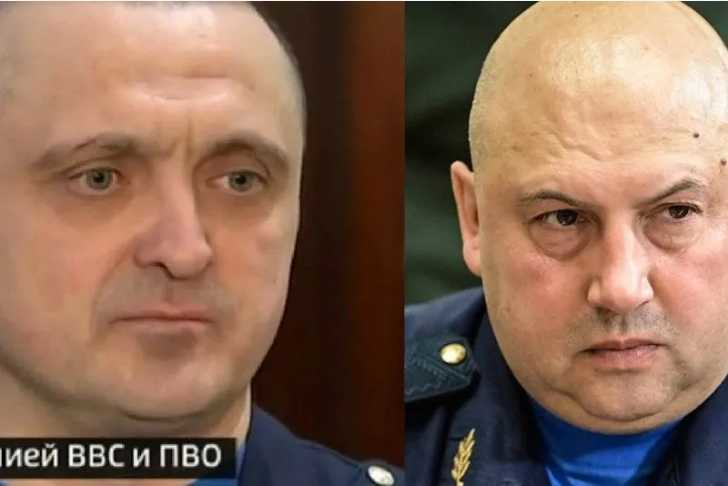
The truth is, Surovikin’s case has been somewhat suspicious to the extent that no one has seen him in any MOD meetings since June, including a recent one attended by Gerasimov and others. Russian duma deputy Kartapolov was asked by a journalist on camera last month as to Surovikin’s whereabouts, in a video I posted in a previous report. Kartapolov replied he was “resting for now”, which seemed like a bad joke. However, I posted an audio of Surovikin’s own daughter stating he was fine and busy at work, so it was difficult to parse.
Surovikin, if you’ll recall, was said to be close to Wagner, with Prigozhin claiming that the entire Bakhmut operation itself was in essence owed to Surovikin’s strategic thought. He also was said to have somewhat unofficially helped reorient certain unused ammunition stocks from other groups to Wagner. However, recall that General Mikhail Mizintsev, who was a deputy defense minister, was also said to have done the same for Wagner and was close with the PMC. He too was “removed” but allowed to join Wagner, which he did.
There was also rumor yesterday that Surovikin too joined Wagner, while other rumors said he was merely shifted to other duties in the ministry of defense. There is no confirmation as of yet where he actually ended up, and some believe he’s been detained or could face prison.
The point of that is the fact that these two events clearly appear related. You’ll be hard-pressed to convince me that the chief and highest ranked member of the Russian military to be potentially accused of treason or aiding and abetting the Wagner coup was officially removed literally hours before the head of the coup himself is assassinated—and that it’s all just a coincidence. This isn’t necessarily a smoking gun confirming that the Kremlin is responsible for the Prigozhin hit. After all, a malicious 3rd party actor could have used yesterday’s Surovikin incident to strike Prigozhin in order to deliberately make the two events appear connected, for example. But given the fact that the Prigozhin hit would likely have to have been planned and coordinated well in advance, it makes it harder to believe that it wouldn’t be a state actor or Russian security services responsible.
But if the Surovikin and Prigozhin events are related, as they appear, then why now? Why did events culminate now of all times?
There isn’t any direct evidence but some purely speculative hypotheticals could be:
Perhaps another ‘coup’ attempt of some sort was slowly gestating. There were rumors earlier that many Wagner troops were “missing” from Belarus, which may not be as strange as it sounds in that it’s common knowledge a majority of them were given leave of some kind. Many or most of them likely went back to Russia, as I understand it. If they and Surovikin/Prigozhin may have continued planning some new provocations, then this could be the logical result.
Keep in mind, I give the above a very low confidence and almost 0% chance of probability, but just laying it out in the interest of giving all potential theories.
Or perhaps the planners of today’s events deliberately wanted the actions to appear related to send a message to any other potential ‘traitors’ that a cleansing is being carried out, and anyone thinking about crossing the MOD and betraying Russia will have a similar end.
Also, assuming Putin/FSB/MOD was responsible, the reason for waiting til now rather than getting Prigozhin right away is obvious, to me at least. If you neutralize him immediately, you risk doing so while the Wagner association was still assembled and frothing with amped up adrenaline and fervor, and could risk unleashing the beast. But if you wait a few months for things to die down, people to disperse, fires and passions to cool, you can do it without rousing too much blowback. Not to mention there could have been a number of administrative things they still needed Prigozhin to finalize in the organization, move pieces into the right place, etc., before it was convenient to decapitate the PMC.
The other thing is that Wagner was rumored to be returning to some kind of conflict zone in the “end of August”, which is when their leave was to expire, but the soldiers had no idea where they would be committed yet—i.e. Africa, Belarus, Ukraine, etc. There were strong reports that they were in fact not allowed in Ukraine anymore, and this appeared to be confirmed by the fact that Prigozhin even changed the Wagner logo to incorporate the official Belarusian Soviet Socialist Republic heraldry, which he wore on his patch in the one new video he had made from Africa days ago.

This seemed to indicate a permanent shift to Wagner as a Belarusian entity from this point on, with likely a dual focus of Belarus and Africa. However, there seemed to be some things brewing on the Africa front. Bellingcat’s Christo Grozev just days ago wrote a long exposé on intrigues thereof. To summarize, his main thesis is that Wagner/Prigozhin and the Russian MOD have been competing recently for the African front:

And the gist of it was that the MOD was trying to replace Wagner in Africa, slowly but surely, with a series of their own PMCs. Despite the source, this is believable for logical reasons: of course Russia could have been slowly decommissioning Wagner all over the globe. Wagner had been allowed to grow out of control, beyond its master’s restraints and this proved nearly costly for Russia.
However, it takes time to replace all the inroads Wagner built so they’ve likely been doing this slowly. This for obvious reasons didn’t sit well with Prigozhin and he likely was making further moves behind the scenes to block the MOD from incurring on what he considered “his territory.”
For instance, one pro-Wagner channel states:
"If Prigozhin died, then Africa died in that plane, in which the Russian Federation formed its economic and political influence. Since it was Prigozhin who communicated and built relationships with all the leaders.
Africa is energy.
Having lost Africa, we are losing a huge part of the monopoly on controlling and setting prices, on energy resources. For example, only a week ago there was a message that a huge amount of oil was found in that same Niger.
If the US and the EU control energy exporting countries, they can dump their prices. Thus, reducing the energy and political influence of Russia, and at the same time destroying its economy.
Prigozhin is not "just a general like in WWII"
Prigozhin is Nord Stream 3 to Africa.
And now it's destroyed."
Firstly, take the above absurdities with a grain of salt. No, Africa isn’t dead to Russia without Prigozhin. But it’s meant to illustrate how Prigozhin and his ilk think. He was an oligarch, a businessman, a one-time ex-con and thief. He considered his get as his and would scorn anyone for trying to take it from him. Though he dissembled under the shroud of ‘patriotism, motherland’ and the like, he operated like a mafia boss, which was witnessed by all on the day he launched an insurrection because the MOD was forcing his fighters to register.
This is merely to give context to the speculation that the events of today could have been precipitated by the ongoing tussle and scramble for Africa. As I said, Wagnerites were supposed to have been returning in late August—to somewhere. Perhaps seeing the deadline coming up, some people in power decided to pull the plug entirely and effect a “hostile takeover” of the Wagner organization. I even half-joked that Surovikin may end up as the new Wagner boss, given that Mizintsev followed a similar path and Wagner may need a new ‘face’ of the organization.
By the way, if you read the above post about Africa and felt a hint of despair or worry, know this: it is absolutely dangerous for any private corporation, particularly one run by an ex-con mafioso oligarch, to completely control a given Great Power’s relationship with an entire continent. Not that I think Wagner actually had that, but what I mean is that at no point should a corporation or private interest, no matter how noble and “patriotic” they claim to be, be given license as chief conduit, interlocutor, or go-between of a major power like Russia in geopolitically dealing with a continent or countries for that matter. It doesn’t matter what your sentiments or dispositions towards Prigozhin are, you have to acknowledge the danger of such a situation, where one man and his private company are gatekeeper and monopoly in one on Russia’s access to a strategically essential continent.
This is unacceptable for any democratic society for the same reason that the CIA and its minions, the federal reserve, or any such institutions are execrable and anti-democratic parasites. Because they represent unelected figures who have no accountability to any electorate or constituency, which is antithetical to how modern democracies should be run.
That’s to say that if you find yourself siding with Wagner in this speculative Africa wrangle, you should consider how dangerous it is for a corporation to have that much control and power—irrespective of how you may feel about the Russian MOD and its adequacy, competency, etc. No private organization should boast the keys to a continent and the ability to withhold them.
If that was really the case, and contributed to the culmination we had today, then one can begin to understand the Russian MOD’s potential need to get rid of the Wagner ‘board of directors’ once and for all. The only point of contention is that, if they did do that—would they have done it on the outskirts of Moscow? Furthermore, would they have done it during a historic BRICS summit, potentially tarnishing Putin and his reputation?
On one hand, that would seem illogical. On the other, we must remember that Putin and Russia have no qualms—when absolutely necessary—about launching major operations with potentially “bad optics” during significant summits. For instance, the Georgian 2008 war on 8/8/8 was launched as Putin was sitting with Hu Jintao in Beijing watching the opening ceremony of the 2008 Summer Olympics. I still remember talking heads being galled at how “obscene” the timing was. In fact, oddly enough, the olympics returned to Beijing for the winter variety in February 2022 and ended four days before Putin began the SMO on February 24, 2022.
That’s to say that Putin is not necessarily above doing what must be done during ‘sensitive’ events or time periods. If it defends Russia’s interests, he doesn’t care that it ruins the optics or casts a bad light on some pageant.
There were rumors that the Wagner ‘council of commanders’ would convene, and other rumors that the MOD was again issuing contracts to remaining Wagner fighters.
One potential aspect is that Prigozhin could have foreseen events and left a ‘dead man’s switch’ to strike back in the event of his death. One such rumor from the propagandist channel goes as follows:
"A source familiar with Prigozhin about the death of the latter:
"Prigozhin was sure that Putin would forgive him everything and was not afraid of anything. He said that he knew a lot .... We will see if something from his archives appears now ... As for the people with whom Prigozhin died. They always flew as a three - Prigozhin, Utkin, Chekalov. Chekalov was responsible for the entire rear, Utkin for the combat unit of the PMC Wagner.""
The other natural worry of course is that this would create even greater divisions against the Russian MOD, and that remaining Wagner fighters might revolt, particularly if this event had anything to do with some kind of already-brewing second stage insurrection behind the scenes.
Some videos of quite questionable provenance have already been disseminated, most likely by Ukrainian CIPSO (Pysop Center). For instance, this one claims to show masked Wagner fighters warning of “things to come”, but it’s almost certainly an SBU fake:

He brings up an interesting point. Many pro-Ukrainians, 2D Bloggers, concern trolls, and Schizopatriots will now use this event to push the theory that Prigozhin was suddenly beloved and his death greatly mourned by all Russian servicemen who will now take up arms in his honor against the MOD.
Recall that after the events of June, sentiment turned heavily against Prigozhin in Russian society. The only “negative sentiment” was that of people who were angry that Prigozhin wasn’t punished. I posted the polls in an earlier report illustrating this. Now we’re supposed to believe those same people will be unhappy with today’s result?
The propagandists will also now attempt some hand-waving magic to make us believe that “patriots” like Prigozhin and Strelkov are being punished by evil Putin. Yet Prigozhin himself was not only an arch enemy of Strelkov, but considered him a vile traitor. Further, it was Wagner that was responsible for Strelkov’s arrest, as a Wagner doctor confessed to being the one who wrote a police complaint the day before.
The truth is, Strelkov and Prigozhin/Wagner hated one another, and each accused the other of being the chief traitor to the country. But the propagandists will now attempt to spin us a yarn about how both of those men are the “true patriots” while Putin is the traitor. Which one is it? If one of them is the patriot then his word must be gold, which means his accusation of the other one of treason should be honored, no?
In reality, both are men who tried to carve out their little disposable kingdoms under the guise of some wan patriotic gestures and faux-idealisms. I think this summarizes Prigozhin best:

Of course, the part about enjoying considerable support after the coup is a bit questionable. Yes, the support was still “considerable”, relatively speaking, but it was down massively from earlier. Here’s a quick reminder:
Prigozhin, by my accounting, was a charismatic and likable figure. Because, while being an inordinately rich billionaire, he successfully depicted himself as a ‘common man’, the redeemed folk hero type as above, a sort of freedom fighter against the myriad corruptions and ills of the modern world. He was a witty showman and had a good feel for what the sodden masses hungered for, which made him appealing. But like certain hucksters—for instance, more recently Andrew Tate—he had a knack for concealing his personal interests behind clever “populist” facades. As long as you give people 70% of what they want to hear, the 30% graft can be easily masked away with a street magician’s sleight-of-hand.
Maybe, ultimately, he wasn’t even a bad man—I’m not necessarily saying he was, or that his disputes with the Russian MOD were out of malice. Perhaps it’s even understandable that a man who built his own empire should be expected to fiercely defend it in the way he did.
But regardless if that’s true or not, what he represented was nevertheless dangerous; it set a dangerous precedent. For a single individual and his private corporation/organization/interests to wield that much power and attempted sway over the policies of the state, no matter how charismatic or well-meaning, is dangerous. If the people don’t like what Putin is doing—or the generals he appointed, for that matter—they can vote him out; that’s how democracies are supposed to work. Prigozhin represented a virulent threat to the Russian state no matter his apparent intentions. The fact is, the people didn’t support what he did, or attempted to do on June 23rd. That’s objectively proven via polling. If polled, I suspect the people wouldn’t approve of him trying to muscle out the official state/public representation in Africa either—if that was even the case. Sure you might argue that the MOD is simply attempting to replace him with another private PMC anyway, so what’s the difference? But at least it’s a PMC under state control, which makes it an extension of it.
What I see is the slow, gradual, and inevitable reformation and clean up job that the MOD is doing on the entire systemic framework and infrastructure of the Russian armed forces and its various attendant apparatuses. It’s a colossal scale re-organization, a purification, ablution. This has been an ongoing process since the start of the SMO. We’ve talked at length about how Russia was not structurally sound enough to handle the magnitude of events today. This includes the oft-quoted fact about the first partial mobilization since WW2, the largest force usages, etc.
There have been endless reshufflings, retoolings, and adjustments done on the fly to right the ship and get the Russian state machine trim and into well-oiled combat shape. It’s a historic, epochal transformation process that’s etching away decades of rust and bureaucratic rot, convolution, and inelasticity in many levels and stations, top to bottom. And yes, it’s not pretty. At many times this process appears ugly, dysfunctional, and neurotic—but I believe it will lead to a better and stronger state with a more unified vision and purpose.
Wagner was a holdover of that. They did their needed job, played their given role as an important implement of state at a time when the Russian military apparatus was perhaps wayward and rudderless. But now there is a dawning of something new. New, stronger structures must come into being to prepare for the unprecedented things to come. For a civilizational state like Russia, all attendant organs and implements are chess pieces with a role to play—they must never forget that, or get too big for their britches. Everything and everyone must serve the state, which itself serves the Russian people. From the time of the Syrian conflict onward, Wagner enjoyed a rare form of laissez-faire free-rein at a time when Russian leadership lacked a certain coherence, which led to Prigozhin assuming things would always stay as they were. Now they must be absorbed and reined in as the state builds a new, historic level of centralized focus and alignment of vision and action.
That’s why we can’t get sentimental about one piece or another being ‘discarded’ if it has outlived its usefulness. As Putin once said to a reporter, “I’m not your friend, I’m the president of Russia.” He was referring to a certain perspective that a state cannot resort to sentimentality, a state can only serve its interests, which are the interests of its people. Was Wagner serving those interests with the intrigues described earlier? Does it serve Russia’s interests to muscle out the official state representatives in an entire continent, carving it out as your personal warlord fiefdom? A private company technically only serves the interests of its own members and financial shareholders, no matter what it claims or what kind of buzzwords and patriotic slogans it adopts.
Prigozhin may have had his heart in the right place. I’m not denying he didn’t love his country or that he didn’t want the best for it. But his allegiances were naturally split between his country and his own personal creation, the pet project he viewed as his magnum opus and undying legacy; and unfortunately that led to a deadly conflict of interests.
That being said, even given those conflicts of interest, we still can’t be certain that Russia would have resorted to offing him in such an ostentatious way, on the outskirts of Moscow no less. It could still very well have been a malicious third party actor with the intent to frame Russia and foment division and a new rebellion. After all, the timing is peculiar given Russia’s own actions vis a vis the Surovikin dismissal, but conversely, the timing is likewise “interesting” given Ukraine’s own—and by extension that of NATO and attendant intel services—desperate promises of escalations, and an urgent need for something new to destabilize Russia in order to save its own disastrous “counter-offensive”. Budanov himself promised some more “surprises” for the end of August, if I recall—and Ukraine has been increasingly leaning into terror as its last shtick.
It’s difficult to say for certain which one is more likely; though we need not be reminded that Prigozhin had truly sealed his fate with his unprecedented actions in June, and no sane person could argue against his comeuppance likely being in the cards for some point in the future. Even the most hapless of analysts liberally opined that “his time was short for this world.” The Dudayevs, Baisorovs, Basayevs, Umarovs, et al, all learned the cost of crossing—or rather, double-crossing—Russia. We, after all, can’t forget these words:
